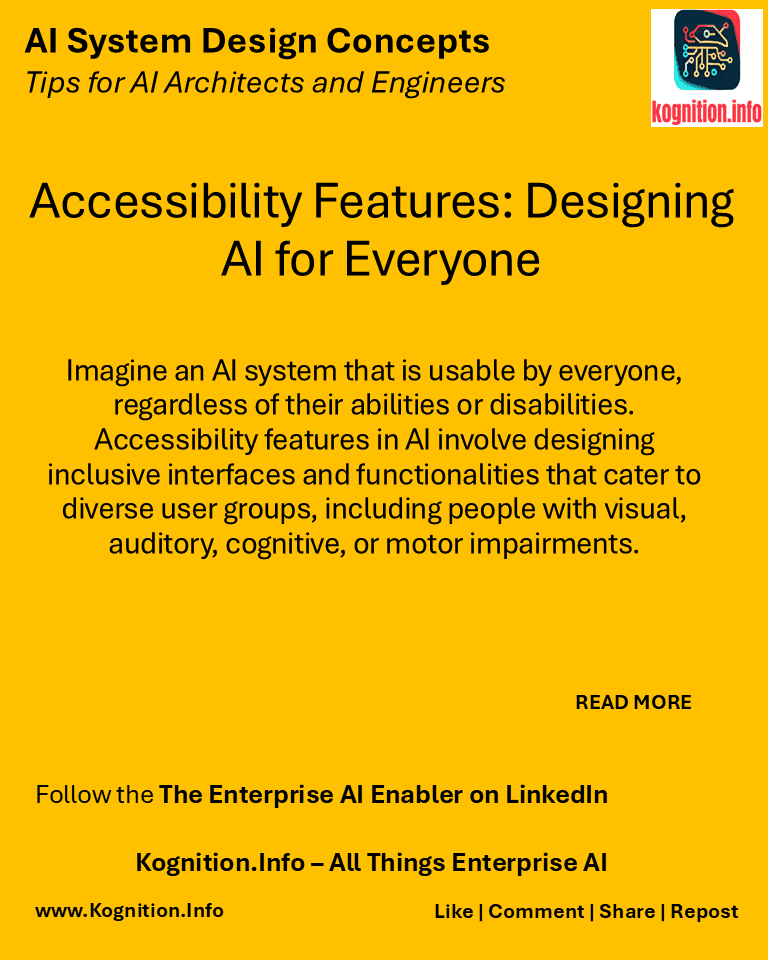
Imagine an AI system that is usable by everyone, regardless of their abilities or disabilities. Accessibility features in AI involve designing inclusive interfaces and functionalities that cater to diverse user groups, including people with visual, auditory, cognitive, or motor impairments.
Use cases:
- Screen readers: Integrating AI-powered screen readers that can describe images or user interfaces for visually impaired users.
- Voice control: Enabling voice control for users with limited mobility or dexterity.
- Cognitive assistance: Providing AI-powered tools that assist users with cognitive impairments, such as memory aids or task management tools.
How?
- Follow accessibility guidelines: Adhere to accessibility standards and guidelines, such as WCAG (Web Content Accessibility Guidelines).
- Provide alternative input methods: Offer various input methods, such as voice recognition, keyboard navigation, or gesture control.
- Design for diverse users: Consider the needs of users with different disabilities, such as providing captions for videos or using clear and concise language.
- Test with users: Conduct usability testing with users with disabilities to identify and address accessibility issues.
Benefits:
- Inclusivity: Makes AI accessible to a wider range of users, promoting inclusivity and equal access to technology.
- Improved user experience: Provides a more user-friendly and satisfying experience for all users.
- Social responsibility: Demonstrates a commitment to ethical and responsible AI development.
Potential pitfalls:
- Awareness: Lack of awareness of accessibility guidelines and best practices can lead to inaccessible designs.
- Testing: Thorough testing with users with disabilities is crucial to identify and address accessibility issues.
- Retrofitting: Adding accessibility features after the AI system has been developed can be more challenging and costly.
